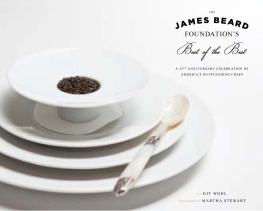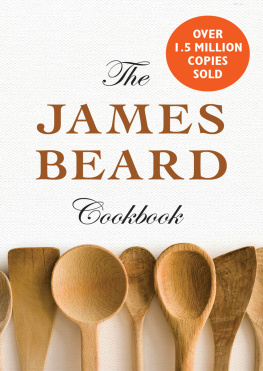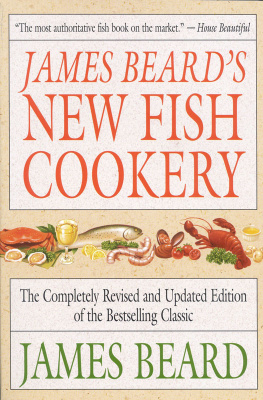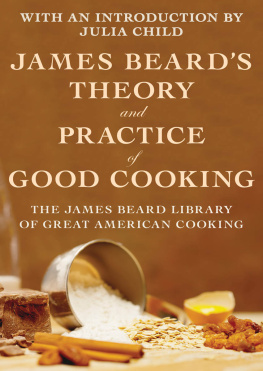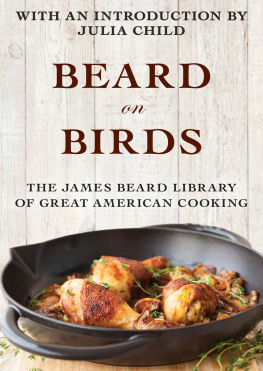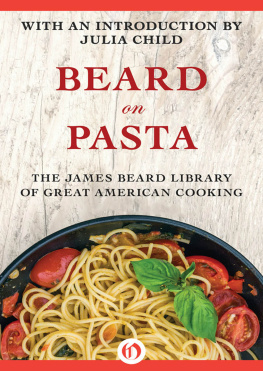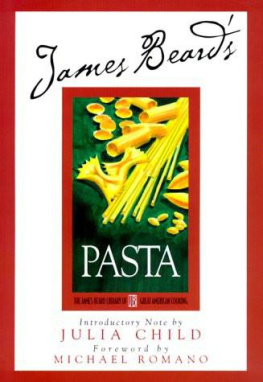MARTHA STEWART



Looking at the pictures and studying the recipes in this beautifully conceived, wonderfully photographed book, one gets an immediate sense of the scope, importance, and influence imposed on the American culinary taste by the many outstanding chefs who are featured. One also can understand more clearly how the melting pot that is America, the America that so thoroughly entranced the great James Beard with its incredible diversity and multiculturism, influenced the way these chefs cook.
There are twenty-one inspiring biographical monographs written by Kit Wohl about the twenty-one great chefs who have been selected as Americas Best of the Best. I was thrilled to realize that I have had each of these renowned chefs on my television shows. I have eaten their food more than once in my lifetime. And I know exactly why they were selected above all others as the best: their talent as chefs, their acclaimed food, and their vast contributions to the American culinary landscape.
I remember every dish I ate at each of their restaurants, and the memories evoked by this book are lovely and deep. Each chef has been recognized for his or her contributions to the culinary traditions of America and for their originality, creativity, and individualism. Most are American, steeped in local culture but greatly devout in their belief that home grown and fresh is best and purity of ingredients essential for superior results, while others are European, or trained internationally.
How lucky we are to be the recipients of such wonderful recipes, all of which I plan to try in the very near future: Judy Rodgers Zuni Bread Soup, Cavatelli with Pasta Enrico from Mario Batali, and even an intriguing dessert, the Limoncello Tiramis, from Lidia Bastianich.
This book is not just a tribute to twenty-one great chefs and their histories. It is, most important, a book devoted to James Beard, a central figure in the acknowledgment and promotion of what we all nowadays call American Cuisine. James Beard wrote more than thirty cookbooks, and he is credited with bringing French cooking to American cooks. He talked and gossiped and cooked his way through giant categories in the world of cuisine: breads, pasta, fish, barbecue, and casseroles, to name but a few.
I cherish many of his books, but my favorite is a tattered, worn-out first edition of Beard on Bread from 1973, which I still refer to for his Mothers Raisin Bread and a delectable Sally Lunn.
I remember meeting James Beard, a giant of a man with a large head, large hands, and a larger belly, at a foodie event hosted by Craig Claiborne and Pierre Franey. His jovial, loud, and boisterous personality was so awe inspiring, but even more so was the vastness of his knowledge, his collections of fine personal commentary, and recipes about the foods he was so passionate about.
The influence of James Beard is so widespread and his memory so very gracefully preserved, thanks to the James Beard Foundation, its good works, and the chefs and cooks everywhere who everyday practice what James Beard taught us so well.
SUSAN UNGARO, PRESIDENT OF THE JAMES BEARD FOUNDATION
with MITCHELL DAVIS, VICE PRESIDENT OF THE JAMES BEARD FOUNDATION
Looking back on the last 25 years, its hard to believe how much American food and food culture has evolved. When the James Beard Foundation was founded in November 1986 by Peter Kump, Julia Child, and other friends and colleagues of James Beard, no one could have imagined that there would one day be two 24-hour television networks devoted to food programming and that just about every other station would have some sort of popular food content as well. Who could have conceived of anything like the Internet, let alone the hundreds of thousands of food blogs, the millions of people exchanging real-time information about restaurants and chefs and recipes and everything else? It would have been hard to envision a world where Gourmet magazine was electronic, just as it would have been impossible to think of using a mobile phone to search a recipe database to decide what to make for dinner.
At the center of all of this excitement and enthusiasm for food has been the chef. The original mission of the Beard Foundation was to shine a spotlight on the men and women who prepared the food we loved in celebrated restaurants, both new and old. The first chef to cook a dinner at the James Beard House was a young, dynamic Austrian chef from California named Wolfgang Puck whose restaurant Spago was wildly popular for inventive pizzas and other creative dishes. After Pucks dinner in January 1987, Peter Kump sent a thank-you letter noting that the success of his event gave the Foundation the idea of doing similar guest-chef benefit dinners monthly. In addition to providing a performance space for chefs from around the country and helping to raise money for the Foundation, Kump explained that these monthly dinners would be the start of a tradition for showcasing new chefs who have not yet received recognition.(That would prove to be a prescient statement, as Puck went on to win the first award for Outstanding Chef that was given four years later and then in 1998 became the only chef to win the award twice.)
THE IMPORTANT ROLE OF CHEFS
As you make your way around the worlds great food cultures, the chef doesnt always take center stage. Sure, French chefs are a prized part of Frances cultural patrimony. But in Italy and Thailand, two great food cultures in their own right, big names in the kitchen are arguably less important than the food prepared in homes and local, casual eateries. Even in France, a rich regional food culture informs the palates of the populace before they sit down at the countrys great tables. By contrast, in America, where our food culture has come to us top downvia experts such as James Beard and the chefs he inspiredand where the notion of celebrity is a byproduct of Hollywood, it was only a matter of time before the handsome men and women in starched white jackets and checked pants began to get their due.
By the end of 1990, the Beard Foundations program calendar had expanded from one dinner per month to 15. In an article about a Beard Foundation event orchestrated by Oklahoma chef and Beard friend John Bennett, the New York Times called the Beard House a shrinewhere the nations top culinary talent [are] showcased. Still, the Foundations directors were looking for other ways to turn up their spotlight on American chefs. The James Beard Foundation Awards were born.
The James Beard Awards were formed in the fall of 1990 by combining two previously existing awards programs, one for books, one for food-world luminaries, and by creating a third program specifically designed to recognize the accomplishments of chefs and restaurateurs. The book awards began their life in 1966 as the R.T. French Tastemaker Awards. By the time the Beard Foundation assumed the administration of them, they were 25 years old and they had become the most prestigious awards for culinary books. Beard himself had won the Cookbook of the Year award in 1972 for

